I. Introduction
A. Brief overview of Mount Everest
B. Significance of climbing Mount Everest
C. Importance of understanding the time it takes to climb Mount Everest
II. Factors Affecting Climbing Time
A. Route chosen
B. Climber’s experience and fitness level
C. Weather conditions
D. Acclimatization process
E. Expedition logistics
III. Typical Timeframes for Climbing Mount Everest
A. Preparation phase
- Training regimen
- Acclimatization schedule
B. Climbing phases - Base Camp to Camp 1
- Camp 1 to Camp 2
- Camp 2 to Camp 3
- Camp 3 to Camp 4 (South Col)
- Summit push
C. Descent phase - Returning to lower camps
- Descending to Base Camp
IV. Case Studies of Expeditions
A. Successful expeditions with efficient climbing times
B. Failed attempts due to time constraints
C. Comparison between different climbing strategies
V. Safety Considerations and Time Management
A. Importance of pacing and rest breaks
B. Recognizing signs of altitude sickness
C. Balancing speed with safety
VI. Conclusion
A. Recap of factors influencing climbing time
B. Emphasis on the variability of climbing durations
C. Importance of proper planning and preparation for climbing Mount Everest
I. A Brief Introduction to Everest.
Mount Everest, the tallest peak on Earth, commands awe and reverence from adventurers and explorers alike. Rising majestically at an astonishing height of 29,032 feet (8,848 meters) above sea level, it stands as a symbol of human endeavor and the indomitable spirit of exploration. Let’s delve into the various aspects that make Mount Everest a unique and compelling destination for climbers worldwide.
A. Brief Overview of Mount Everest
Named after Sir George Everest, the British surveyor-general of India in the 19th century, Mount Everest, also known as Sagarmatha in Nepali and Chomolungma in Tibetan, is situated in the Himalayas on the border between Nepal and Tibet. Its soaring summit pierces the sky, seemingly touching the heavens, and its sheer size and rugged beauty have captivated the imagination of people for centuries.
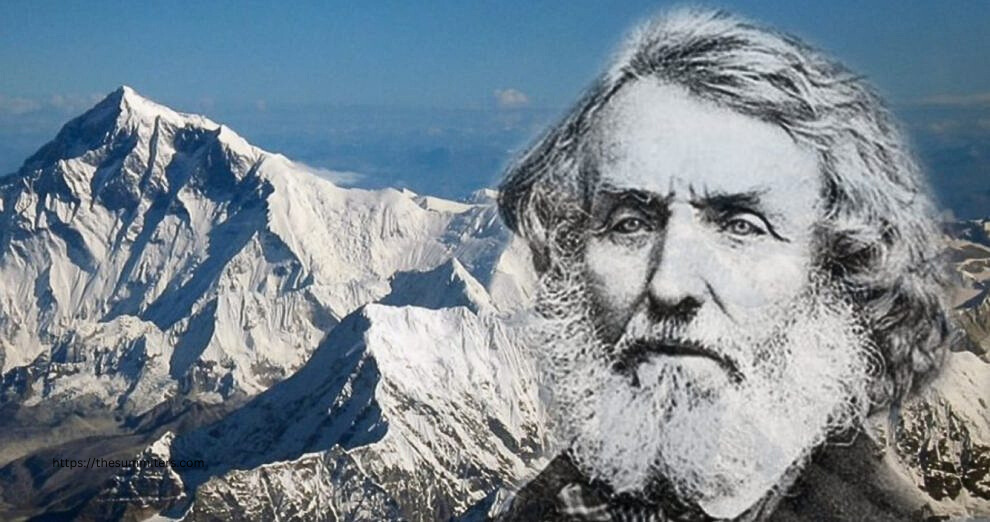
The mountain itself is part of the larger Himalayan range, which stretches across several countries in Asia. Everest’s location in the Himalayas means it is subject to extreme weather conditions, including bitterly cold temperatures, fierce winds, and unpredictable storms. Its challenging terrain, marked by steep ridges, towering icefalls, and treacherous crevasses, presents a formidable obstacle to those who dare to ascend its slopes.
B. Significance of Climbing Mount Everest
For many, climbing Mount Everest represents the ultimate achievement in mountaineering. It’s not just about reaching the summit; it’s about conquering one of the greatest challenges nature has to offer. Standing atop Everest’s peak is a moment of triumph, a testament to human courage, determination, and perseverance in the face of adversity.
Beyond the personal challenge, climbing Everest holds profound symbolic significance. It embodies the human spirit of exploration and the relentless pursuit of excellence. It inspires us to push beyond our limits, to dare greatly, and to strive for greatness. The quest to summit Everest has captured the imagination of adventurers for generations, drawing them to its slopes in search of adventure, discovery, and self-discovery.
Moreover, climbing Everest often serves as a metaphor for overcoming obstacles in life. The journey to the summit is fraught with setbacks, hardships, and moments of doubt. Yet, with unwavering resolve and a supportive team by your side, it is possible to surmount even the greatest of challenges. Thus, climbing Everest becomes not only a physical feat but also a deeply transformative experience that shapes one’s character and perspective on life.
C. Importance of Understanding the Time it Takes to Climb Mount Everest
The allure of Mount Everest can be intoxicating, drawing climbers from all corners of the globe to its slopes. However, embarking on such a monumental journey requires careful consideration and planning. One crucial aspect that aspiring climbers must understand is the time it takes to climb Everest.
Understanding the time required for the ascent is essential for several reasons. Firstly, it allows climbers to set realistic expectations and plan their expedition accordingly. Climbing Everest is not a sprint but a marathon, requiring months of preparation, training, and acclimatization. By understanding the time commitment involved, climbers can make informed decisions about their readiness and suitability for the challenge.
Secondly, knowing the time it takes to climb Everest enables climbers to manage their resources effectively. From food and fuel to oxygen and equipment, every aspect of the expedition must be carefully calculated and allocated to ensure the team’s safety and success. A thorough understanding of the climbing timeline allows for better logistics planning and resource management throughout the journey.
Finally, understanding the time it takes to climb Everest is crucial for mitigating risks and ensuring the safety of climbers. The mountain’s extreme conditions and high altitude pose significant hazards, including altitude sickness, frostbite, and avalanches. Climbers must acclimatize slowly to the thin air and carefully monitor their health throughout the ascent. By pacing themselves appropriately and allowing ample time for rest and recovery, climbers can minimize the risk of injury and increase their chances of reaching the summit safely.
In summary, understanding the time it takes to climb Mount Everest is not only a practical consideration but also a matter of safety and preparedness. It requires careful planning, patience, and respect for the mountain’s formidable challenges. By approaching the expedition with humility and foresight, climbers can embark on a journey of a lifetime and stand on the roof of the world with confidence and pride.
II. Factors Affecting Climbing Time
Climbing Mount Everest is a complex endeavor influenced by a myriad of factors. Understanding these factors is crucial for estimating the time required for a successful ascent. Let’s explore the key elements that impact climbing time in detail:
A. Route Chosen
The route chosen significantly affects climbing time on Mount Everest. There are two main routes to the summit: the South Col route from Nepal and the Northeast Ridge route from Tibet. Each route presents its own challenges and requires varying amounts of time to ascend and descend.
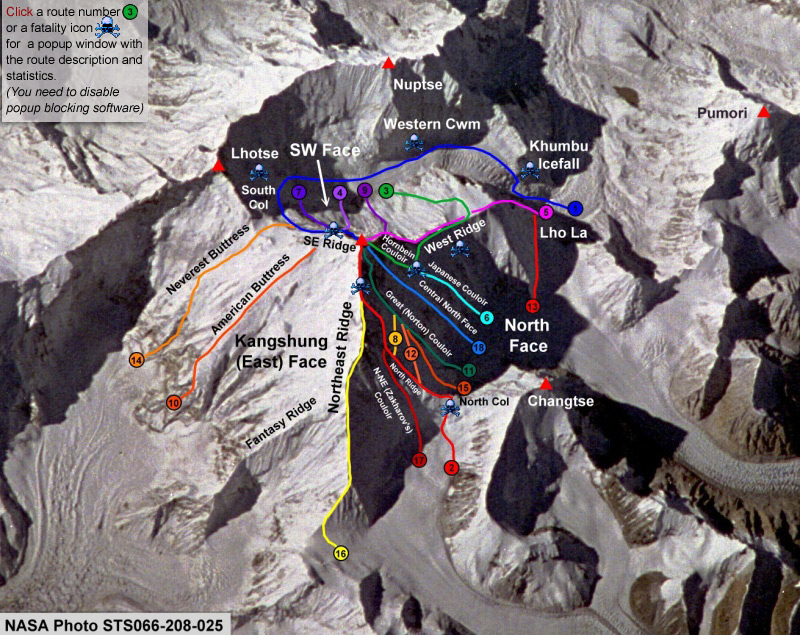
The South Col route, favored by the majority of climbers, offers relatively easier access to the summit but is often crowded during peak climbing seasons. The Northeast Ridge route, although less crowded, presents technical challenges such as the Second Step and the traverse of the North Face.
Additionally, variations within each route, such as the use of supplementary oxygen or the inclusion of additional camps, can impact climbing time. Experienced climbers may opt for faster, more direct routes, while novice climbers may choose safer, more gradual ascents.
B. Climber’s Experience and Fitness Level
The experience and fitness level of the climber play a crucial role in determining climbing time. Experienced mountaineers with a strong background in high-altitude climbing and technical skills may ascend more quickly than novices.
Physical fitness is equally important, as climbing Everest requires a high level of cardiovascular endurance, strength, and stamina. Climbers must be capable of carrying heavy loads, navigating challenging terrain, and enduring prolonged periods of exertion at high altitude.
Training regimens typically include cardiovascular workouts, strength training, and altitude simulation to prepare climbers for the rigors of the ascent. The fitter the climber, the more efficiently they can move up and down the mountain, reducing overall climbing time.
C. Weather Conditions
Weather conditions on Mount Everest can be extremely volatile and unpredictable, impacting climbing time and safety. High winds, snowstorms, and extreme cold can hinder progress and increase the risk of frostbite, hypothermia, and avalanches.
Climbers must carefully monitor weather forecasts and choose optimal windows for their summit attempts. Clear skies, low winds, and stable atmospheric conditions are ideal for a safe and efficient ascent. Conversely, adverse weather conditions may force climbers to delay or abandon their summit bids, prolonging the overall climbing time.
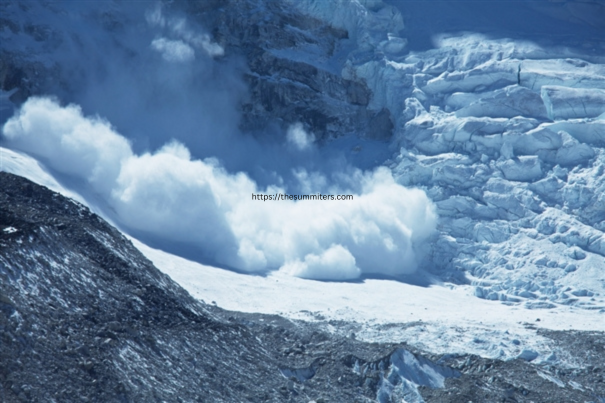
D. Acclimatization Process
Acclimatization is a critical aspect of high-altitude climbing and significantly affects climbing time on Mount Everest. The human body requires time to adjust to the reduced oxygen levels at higher altitudes to prevent altitude sickness and ensure a safe ascent.
Climbers typically follow a gradual acclimatization schedule, ascending to higher camps and then descending to lower altitudes to allow their bodies to adapt. This process may take several weeks, with climbers spending time at various camps to gradually increase their exposure to the thin air.
Failure to acclimatize properly can result in severe altitude sickness, which may necessitate a descent to lower altitudes or evacuation from the mountain. Proper acclimatization is essential for the climber’s health and safety and may prolong the overall climbing time.
E. Expedition Logistics
Expedition logistics, including team size, support services, and equipment, can impact climbing time on Mount Everest. Well-organized expeditions with experienced guides, ample supplies, and efficient communication systems may ascend more quickly than poorly equipped or unsupported teams.
The availability of supplemental oxygen and high-altitude porters can also influence climbing time, providing climbers with additional support and resources to facilitate their ascent. Conversely, logistical challenges such as equipment failures, supply shortages, or communication breakdowns may delay progress and prolong climbing time.
Furthermore, the coordination of logistics, including transportation, accommodation, and permits, requires careful planning and coordination. Delays or complications in these logistical arrangements can disrupt the climbing schedule and extend the overall duration of the expedition.
In summary, climbing time on Mount Everest is influenced by a combination of factors, including the chosen route, climber’s experience and fitness level, weather conditions, acclimatization process, and expedition logistics. By understanding and effectively managing these factors, climbers can optimize their chances of a successful ascent while prioritizing safety and well-being.
III. Typical Timeframes for Climbing Mount Everest
Mount Everest demands meticulous planning and adherence to a structured timeline to ensure a safe and successful ascent. The climbing process can be divided into three distinct phases: preparation, climbing, and descent. Let’s delve into each phase in detail:
A. Preparation Phase
- Training Regimen
Before embarking on the Everest expedition, climbers undergo months of rigorous training to prepare their bodies for the challenges ahead. Training regimens typically include a combination of cardiovascular exercises, strength training, endurance workouts, and altitude simulation. Climbers focus on building strength, stamina, and resilience to withstand the physical demands of high-altitude climbing.
- Acclimatization Schedule
Acclimatization is a crucial aspect of climbing Everest, as it allows climbers to gradually adapt to the reduced oxygen levels at higher altitudes. Upon arriving at Base Camp (17,600 feet/5,364 meters), climbers follow a carefully planned acclimatization schedule. This involves ascending to higher camps and then descending to lower altitudes to allow their bodies to adjust. The acclimatization process may take several weeks, with climbers making multiple rotations between camps to facilitate adaptation.
B. Climbing Phases
Base Camp to Camp 1
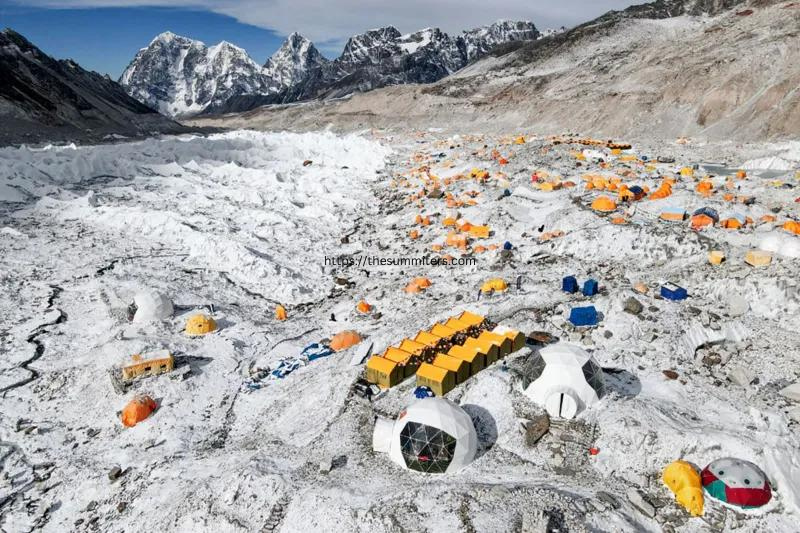
The climbing journey begins at Everest Base Camp, where climbers undergo final preparations before setting out. From Base Camp, climbers navigate the treacherous Khumbu Icefall, a constantly shifting maze of crevasses and seracs, to reach Camp 1 (19,700 feet/6,005 meters). This initial leg of the climb is physically demanding and requires careful navigation to avoid hazards.
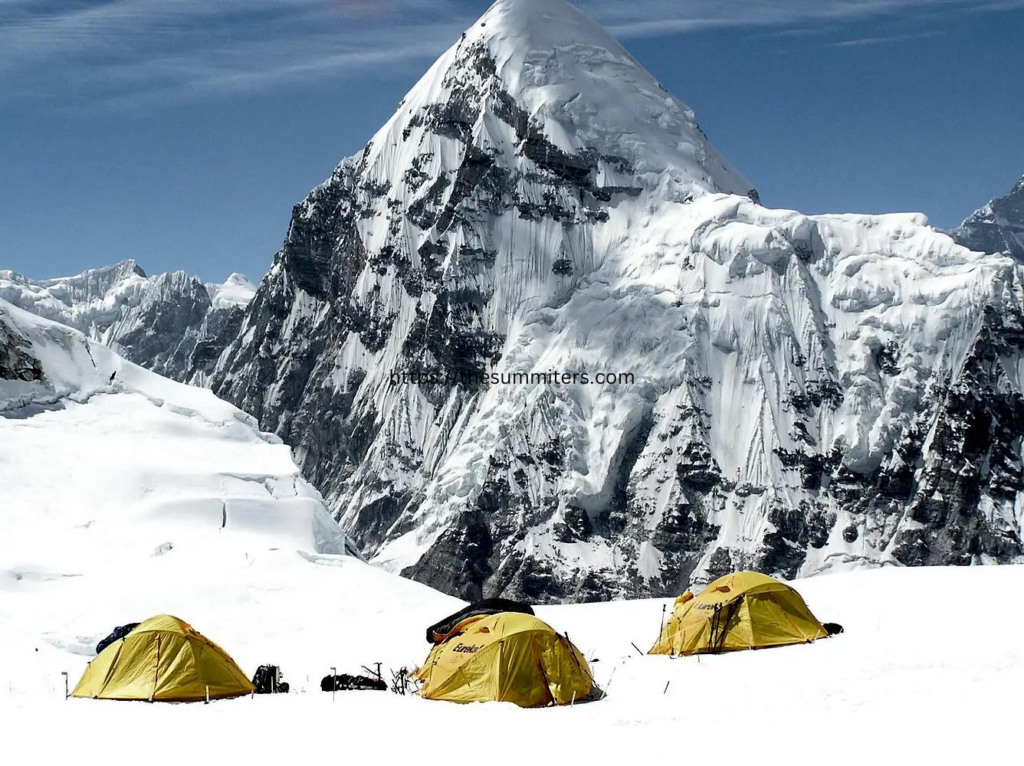
Camp 1 to Camp 2
After establishing Camp 1, climbers continue their ascent through the Western Cwm, a broad, flat valley of snow and ice. They traverse crevasse fields and navigate around towering ice formations to reach Camp 2 (21,300 feet/6,492 meters). This section of the climb involves steady progress over challenging terrain, with climbers carrying heavy loads of equipment and supplies.

Camp 2 to Camp 3
Climbers ascend the steep slopes of the Lhotse Face, a towering icy wall that presents one of the most technical challenges on the route. They use fixed ropes and ladders to navigate the icy terrain and reach Camp 3 (24,000 feet/7,315 meters) on the shoulder of Everest. This section of the climb requires careful footwork and steady progress to avoid exhaustion and altitude sickness.
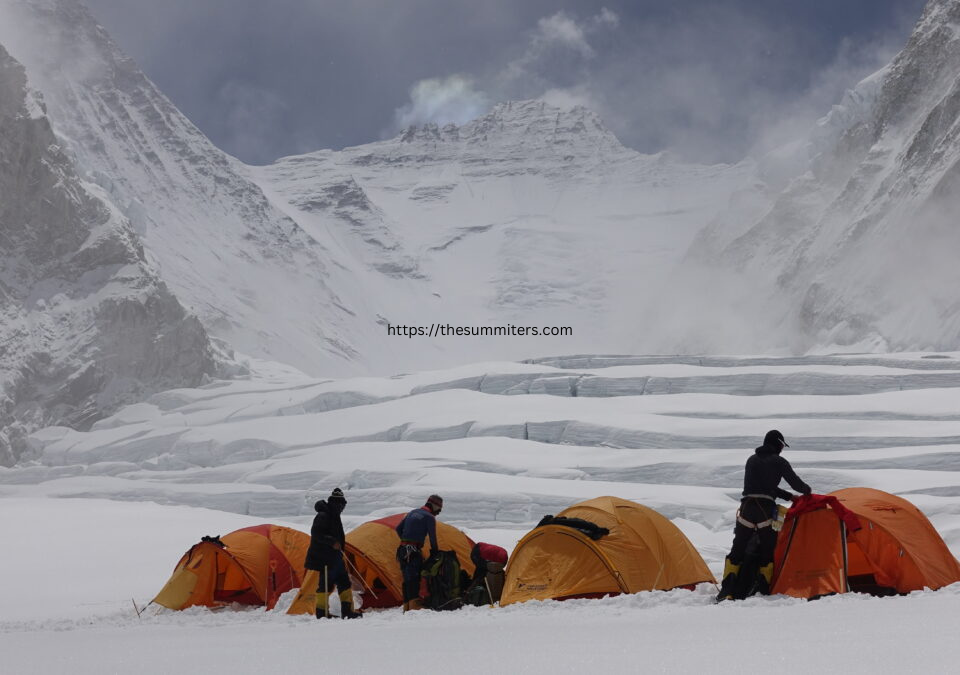
Camp 3 to Camp 4 (South Col)
Climbers continue their ascent through the Yellow Band and the Geneva Spur, rocky outcrops that mark the final approach to the South Col. Camp 4 (26,000 feet/7,925 meters), also known as the South Col, serves as the final camp before the summit push. Climbers rest and prepare for the challenging summit bid ahead, ensuring they are well-hydrated and adequately fueled for the arduous journey.
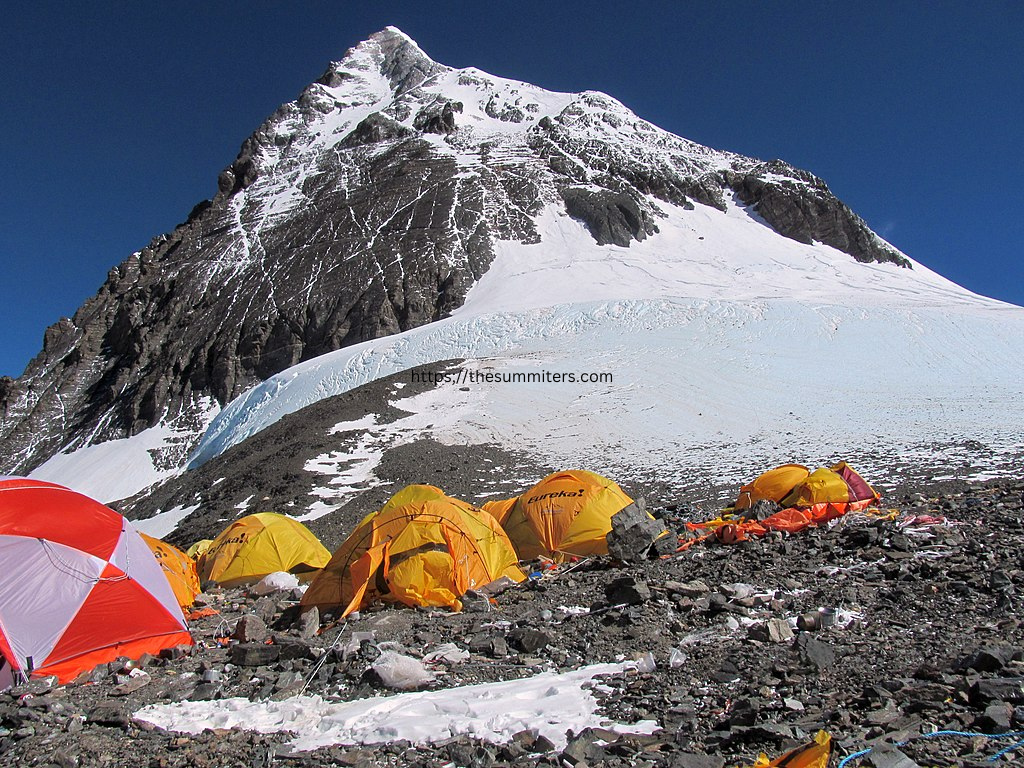
Summit Push
The summit push is the culmination of the climbing effort, requiring climbers to summon all their strength and determination to reach the top. Climbers typically leave Camp 4 in the late evening or early morning, navigating the rocky terrain of the South Col and the steep slopes of the Southeast Ridge. They traverse the precarious Hillary Step, a steep rock face near the summit, before finally reaching the top of the world. The summit push is physically and mentally demanding, with climbers battling exhaustion, cold, and altitude to achieve their goal.
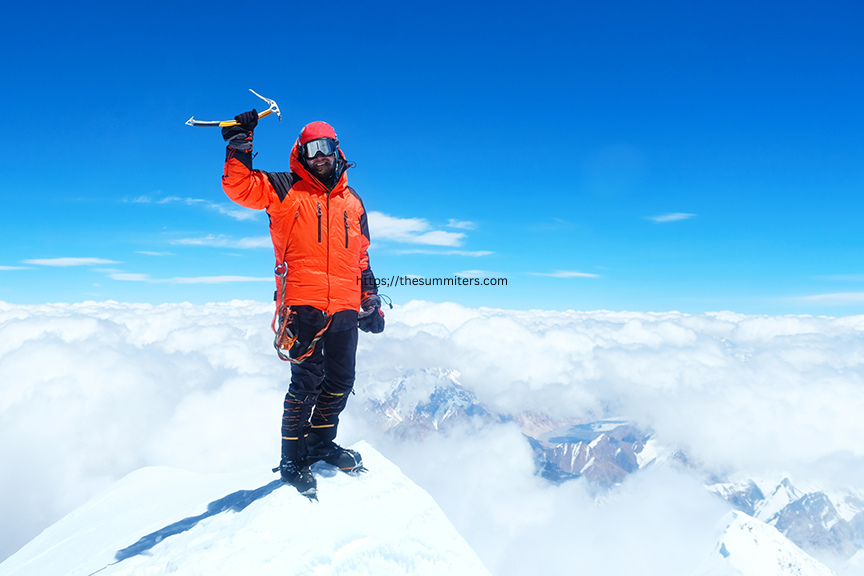
C. Descent Phase
Returning to Lower Camps
After reaching the summit, climbers begin the descent back to lower camps to rest and recover. They retrace their steps along the same route, descending from Camp 4 to Camp 3, Camp 2, and eventually Base Camp. The descent phase is no less challenging than the ascent, as climbers navigate fatigue, changing weather conditions, and the cumulative effects of altitude.
Descending to Base Camp
The final leg of the journey involves descending from Base Camp to the lower valleys, where climbers can rest and celebrate their achievement. Descent from Base Camp marks the end of the expedition, as climbers bid farewell to Everest and begin the journey back to civilization.
In summary, the typical timeframes for climbing Mount Everest encompass thorough preparation, gradual acclimatization, and a meticulously planned ascent and descent. Climbers must be physically and mentally prepared for the challenges ahead, with a deep respect for the mountain’s unforgiving terrain and unpredictable weather. By adhering to a structured timeline and prioritizing safety, climbers can increase their chances of a successful summit bid while ensuring a memorable and rewarding experience on the world’s highest peak.
IV. Case Studies of Expeditions
Mount Everest has witnessed countless expeditions, each with its own unique story of triumphs, setbacks, and lessons learned. Examining these case studies provides valuable insights into the complexities of climbing the world’s highest peak.
A. Successful Expeditions with Efficient Climbing Times
Successful expeditions with efficient climbing times are a testament to meticulous planning, expert execution, and unwavering determination. These expeditions are characterized by several key factors:
- Thorough Preparation
Successful climbers invest significant time and resources into preparing for their Everest expedition. They undergo rigorous training to build strength, endurance, and technical skills required for high-altitude climbing. Additionally, they meticulously plan every aspect of the climb, from logistics to equipment selection, to ensure smooth execution.
- Optimal Weather Window
Timing is critical in mountaineering, and successful expeditions capitalize on favorable weather windows to maximize their chances of summiting. They closely monitor weather forecasts and strategically plan their ascent during periods of stable weather with minimal wind and precipitation.
- Efficient Climbing Strategy
Successful climbers adopt a strategic approach to the ascent, balancing speed with safety. They maintain a steady pace, minimize rest breaks, and optimize their route selection to conserve energy and time. Additionally, they make timely decisions regarding acclimatization and turnaround times to mitigate the risk of altitude sickness and ensure a successful summit bid.
- Effective Teamwork
Collaboration and camaraderie are essential components of successful expeditions. Climbers support and encourage each other, share responsibilities, and communicate effectively to overcome challenges and achieve their common goal. Strong leadership and teamwork are critical factors in maintaining morale and motivation throughout the climb.
Examples of successful expeditions with efficient climbing times include those led by experienced guides and professional mountaineers who demonstrate exceptional skill, resilience, and determination. These climbers navigate the challenges of Everest with precision and confidence, reaching the summit and returning safely within a relatively short timeframe.
B. Failed Attempts Due to Time Constraints
Despite meticulous planning and preparation, not all Everest expeditions end in success. Failed attempts due to time constraints highlight the unpredictable nature of high-altitude mountaineering and the importance of flexibility and adaptability in challenging environments.
- Unforeseen Challenges
Failed attempts may result from unforeseen challenges such as adverse weather conditions, equipment malfunctions, or route complications. These obstacles can disrupt the climbing schedule, forcing climbers to reassess their plans and make difficult decisions about their summit bid.
- Slow Progress
In some cases, climbers may encounter slow progress due to factors beyond their control, such as difficult terrain, crowded routes, or physical exhaustion. Despite their best efforts, they may struggle to maintain the pace required to reach the summit within the allotted time frame.
- Safety Concerns
Climbers prioritize safety above all else, and failed attempts may occur when climbers encounter conditions that pose significant risks to their well-being. High winds, extreme cold, and deteriorating weather conditions can force climbers to retreat to lower elevations or abandon their summit bid altogether to avoid putting themselves at risk.
While failed attempts can be disappointing, they provide valuable learning opportunities for climbers. They gain insights into their limitations, refine their skills, and develop resilience in the face of adversity. Moreover, they emerge from the experience with a newfound appreciation for the challenges of Everest and a renewed determination to pursue their goals.
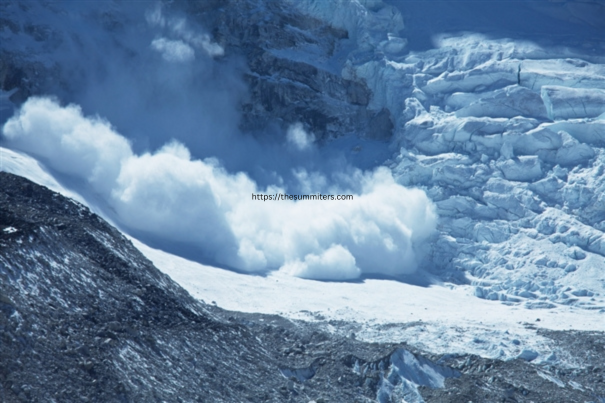
C. Comparison Between Different Climbing Strategies
Mount Everest presents climbers with a multitude of routes and climbing strategies, each with its own advantages and challenges. Comparing these strategies allows climbers to evaluate their options and make informed decisions about their ascent.
- Fast and Light Approach
Some climbers opt for a fast and light approach, aiming to summit quickly and minimize time spent at high altitude. This strategy prioritizes speed and efficiency, allowing climbers to cover ground rapidly and reduce exposure to the risks associated with prolonged exposure to altitude.
- Slow and Steady Approach
Others prefer a slow and steady approach, focusing on gradual acclimatization and conservative pacing. This strategy emphasizes safety and endurance, allowing climbers to adapt to the thin air and harsh conditions of Everest without pushing their limits too quickly.
- Hybrid Approach
Many expeditions employ a hybrid approach that combines elements of both speed and caution. Climbers may ascend quickly to higher camps for acclimatization purposes before returning to lower elevations to rest and recover. This approach allows climbers to strike a balance between efficiency and safety, maximizing their chances of summit success while minimizing the risk of altitude-related illnesses.
Ultimately, the most effective climbing strategy depends on various factors, including the climber’s experience level, fitness, and tolerance for risk. By carefully considering their options and tailoring their approach to the specific challenges of Everest, climbers can increase their chances of a successful and safe ascent to the summit.
V. Safety Considerations and Time Management
Ensuring safety is paramount in any Mount Everest expedition. Effective time management and adherence to safety protocols are crucial for the well-being and success of climbers. Let’s delve into the key safety considerations and time management strategies:
A. Importance of Pacing and Rest Breaks
Pacing and taking regular rest breaks are fundamental to maintaining energy levels, preventing exhaustion, and minimizing the risk of altitude-related illnesses. Here’s why they’re essential:
- Conserving Energy
Everest is a marathon, not a sprint. Climbers must pace themselves wisely to conserve energy for the long ascent. By maintaining a steady pace and avoiding overexertion, climbers can sustain their strength and endurance throughout the climb.
- Preventing Fatigue
Climbing at a sustainable pace helps prevent fatigue and reduces the risk of injury. Overexertion can lead to muscle strain, dehydration, and decreased cognitive function, making it challenging to navigate the mountain safely.
- Aiding Acclimatization
Taking regular rest breaks allows climbers to acclimatize more effectively to the thin air and high altitude. It gives their bodies time to adjust to the reduced oxygen levels, reducing the risk of altitude sickness and improving overall performance.
- Monitoring Physical Condition
Rest breaks provide opportunities for climbers to monitor their physical condition and assess for any signs of distress or illness. By listening to their bodies and recognizing early warning signs, climbers can address issues proactively and prevent more serious complications.
B. Recognizing Signs of Altitude Sickness
Altitude sickness, also known as acute mountain sickness (AMS), can occur when climbers ascend too rapidly without allowing their bodies time to acclimatize. Recognizing the signs of altitude sickness is critical for prompt intervention and preventing more severe forms of altitude-related illnesses, such as high-altitude cerebral edema (HACE) and high-altitude pulmonary edema (HAPE). Here’s what climbers need to watch out for:
- Headache
One of the earliest and most common symptoms of altitude sickness is a persistent headache that worsens with exertion.
- Nausea and Vomiting
Climbers may experience nausea, loss of appetite, and vomiting, particularly as they ascend to higher altitudes.
- Fatigue and Weakness
Feeling unusually tired or weak, despite adequate rest and hydration, can indicate altitude sickness.
- Dizziness and Disorientation
Climbers may feel lightheaded, dizzy, or disoriented, especially when standing up or moving quickly.
- Difficulty Breathing
Shortness of breath, rapid breathing, or a sensation of breathlessness, even at rest, may signify altitude sickness.
- Sleep Disturbances
Insomnia, restlessness, and disrupted sleep patterns are common at high altitude and may indicate the onset of altitude sickness.

Climbers should monitor themselves and their teammates closely for these symptoms and take appropriate action if they occur. Descending to lower altitudes, resting, hydrating, and seeking medical attention are essential steps in managing altitude sickness and preventing its progression to more severe forms.
C. Balancing Speed with Safety
Finding the right balance between speed and safety is crucial for a successful Everest expedition. While reaching the summit is a primary goal, climbers must prioritize their well-being and avoid unnecessary risks. Here’s how to strike the right balance:
- Risk Assessment
Climbers should assess the risks associated with their chosen route, weather conditions, and personal capabilities before setting out. They should be prepared to adjust their plans and turnaround if conditions deteriorate or if they encounter unforeseen obstacles.
- Communication
Effective communication among team members is essential for decision-making and risk management. Climbers should openly discuss their concerns, share information, and collaborate on critical decisions that impact the safety of the team.
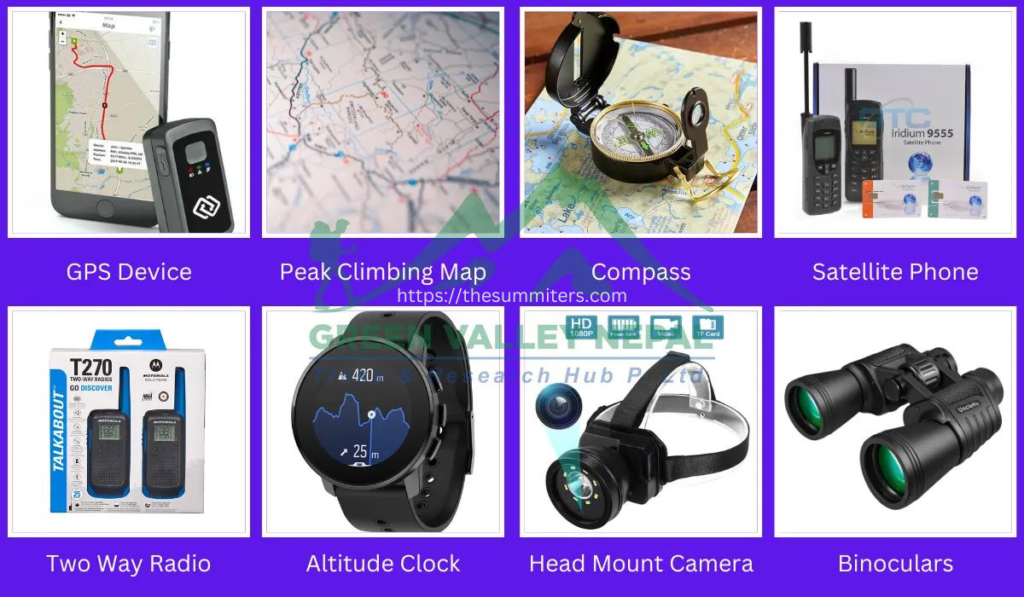
- Flexibility
Flexibility is key in high-altitude mountaineering. Climbers should be prepared to adapt their plans, pacing, and strategies as needed to ensure their safety and the safety of their teammates. This may involve slowing down, taking additional rest breaks, or even abandoning the summit bid if conditions become too hazardous.
- Respect for the Mountain
Mount Everest commands respect and demands humility from climbers. While ambition and determination are admirable qualities, they must be tempered with caution and prudence. Climbers should always prioritize safety over summit success and be prepared to turn back if conditions warrant.
By prioritizing safety considerations and effectively managing their time, climbers can navigate the challenges of Everest with confidence and resilience. With careful planning, patience, and teamwork, they can increase their chances of a safe and successful ascent while forging unforgettable memories on the world’s highest peak.
VI. Conclusion
As we conclude our exploration of climbing Mount Everest, it’s essential to reflect on the key insights gained and emphasize the importance of proper planning and preparation for this monumental endeavor.
A. Recap of Factors Influencing Climbing Time
Throughout our discussion, we’ve highlighted various factors that influence climbing time on Mount Everest. From the chosen route and climber’s experience to weather conditions and expedition logistics, each element plays a crucial role in determining the duration of the ascent. Understanding these factors allows climbers to make informed decisions, set realistic expectations, and optimize their chances of a successful summit bid.
B. Emphasis on the Variability of Climbing Durations
It’s important to recognize that climbing durations on Mount Everest can vary significantly from one expedition to another. While some climbers may achieve swift ascents with efficient time management and favorable conditions, others may face delays, setbacks, or even failed attempts due to unforeseen challenges. The mountain’s unpredictable nature underscores the need for adaptability, resilience, and humility in the face of adversity.
C. Importance of Proper Planning and Preparation for Climbing Mount Everest
Above all, proper planning and preparation are paramount for anyone considering climbing Mount Everest. From physical training and acclimatization to logistics and safety protocols, thorough preparation is essential for a safe and successful ascent. Climbing Everest is not just a physical challenge; it’s a mental, emotional, and logistical undertaking that demands careful consideration and meticulous attention to detail.
By prioritizing safety, respecting the mountain, and embracing the spirit of adventure, climbers can embark on a journey of a lifetime and experience the awe-inspiring beauty and majesty of Everest. Whether reaching the summit or turning back in the face of adversity, every Everest expedition is a testament to the resilience and determination of the human spirit.
As we bid farewell to the world’s highest peak, let us carry forward the lessons learned, the memories made, and the bonds forged on the slopes of Everest. May our experiences inspire others to dream big, challenge themselves, and pursue their passions with courage and conviction.
In the end, it’s not just about reaching the summit; it’s about the journey, the friendships, and the indelible mark left on our hearts by the roof of the world. So, until we meet again on the slopes of Everest, may your adventures be safe, your spirits high, and your dreams as lofty as the peak that beckons us all.
4 comments
This website has quickly become my go-to source for [topic]. The content is consistently top-notch, covering diverse angles with clarity and expertise. I’m constantly recommending it to colleagues and friends. Keep inspiring us!
sed amet veritatis sint quas aliquam praesentium sapiente quia cupiditate et doloremque voluptas et ut deserunt. velit est consequatur placeat molestiae commodi animi. qui magnam suscipit amet volupta
Hey people!!!!!
Good mood and good luck to everyone!!!!!
Hey people!!!!!
Good mood and good luck to everyone!!!!!